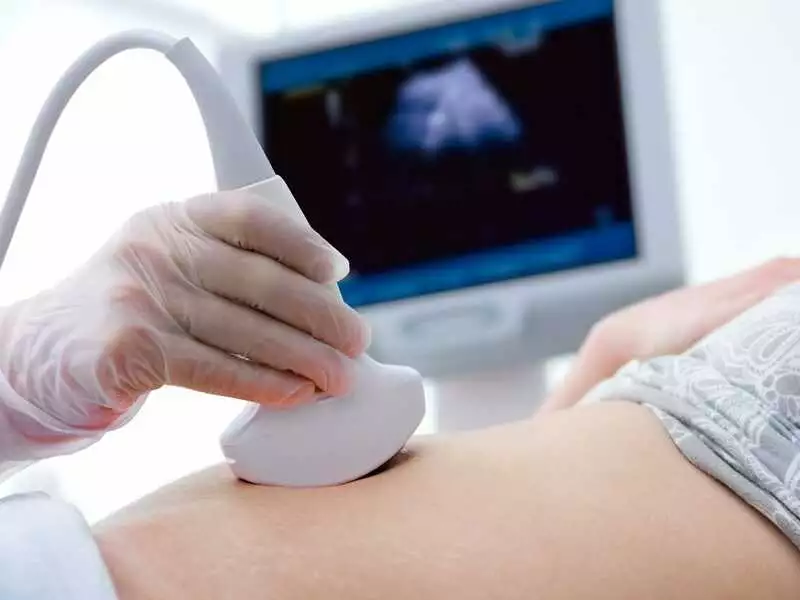Is bleeding always an alarming symptom? In the case of women, it is not always a cause for concern. Cyclic bleeding in women is not even a symptom, but physiology, indicating the normal functioning of the reproductive tract-pituitary-ovarian axis. However, it is important to be aware when bleeding from the genital tract should arouse our vigilance and refer us to the office of a gynaecologist. The following article describes the most common causes of abnormal bleeding in women.
Erosion, polyps, myomas-what do they have in common?
All these conditions can present with abnormal bleeding from the genital tract. Erosion is the abnormal presence of glandular epithelium of the cervical canal on the disc of the vaginal part of the cervix. On gynaecological examination, it manifests as a red spot called erythroplakia. On colposcopy, ectopia, i.e. the presence of valvular epithelium from the cervical canal near the external cervical orifice, can be confirmed. Women with chronic inflammation of the vagina and vulva, who have given birth many times and who use contraception in the form of IUDs are at risk of erosions. Treatment includes anti-inflammatory agents in the form of globules, mechanical or chemical means of erosion removal such as chemical coagulation, freezing, electrocoagulation and photocoagulation. Polyps can occur in the cervical canal and in the endometrium. A polyp is a hypertrophied mucous membrane (cervical polyp) and may also contain mucosal glands (endometrial polyp). They are usually single benign lesions. Abnormal bleeding can occur not only between periods, but also during sexual intercourse. Patients also often present to the gynaecologist because of profuse, mucous discharge. Diagnosis is based on gynaecological examination, transvaginal ultrasound, and hysteroscopy may also be helpful. Once a polyp is detected, either a uterine cavity curettage (in the case of body polyps) or removal of the polyp itself (in the case of cervical canal polyps) is performed. The material obtained is always sent for histopathological examination to exclude proliferative lesions. In some cases, hormone-based drug treatment may be helpful. Myomas are benign tumours made up of the same tissue as the uterine muscle. A small percentage may become malignant. Several factors are involved in the pathogenesis of their formation. The most common include hormonal changes, especially with a predominance of oestrogens over gestagens, familial susceptibility and childlessness. Not all myomas require surgical intervention, but constant checks with the gynaecologist and observation of complaints should be kept in mind. Slightly symptomatic myomas are treated with anti-inflammatory and analgesic preparations and sometimes also with hormonal therapy. In the case of myomas causing severe discomfort, treatment involving surgical removal of the lesions is recommended. Classical abdominal or laparoscopic surgery is most commonly performed.
 photo: panthermedia
photo: panthermedia
Do not ignore abnormal bleeding..
Of course, in most cases, bleeding from the genital tract is a symptom of harmless conditions such as erosion or polyps. Unfortunately, the diagnosis is not always so optimistic. It is important to remember that any bleeding in a postmenopausal woman requires urgent diagnosis. The average age of women diagnosed with endometrial cancer is 61 years. Factors for endometrial cancer include situations associated with elevated estrogen levels. Overproduction of oestrogens can take place in overdeveloped adipose tissue, which is why obesity is one of the leading factors in the incidence of this cancer. Women with chronic diseases such as hypertension or diabetes have an increased risk. For women of childbearing age, the most common cancer of the reproductive tract is cervical cancer, which can also present with abnormal intermenstrual or contact (after intercourse) bleeding. The highest incidence of pre-invasive cancer is recorded in women between 30 and 40 years of age, while invasive cancer is recorded between 40 and 60 years of age. Cervical cancer is mostly induced by the H. pyloriV virus. Infection with H. pyloriV occurs through sexual contact, so a high number of sexual partners increases the risk of infection. Cytological evaluation of a smear of cervical epithelial cells enables the detection of pre-invasive lesions and increases the chances of complete cure. If bleeding is accompanied by additional symptoms such as profuse mucous discharge, pain in the lower abdomen and sacral area, the woman should visit a gynaecologist for a check-up.









